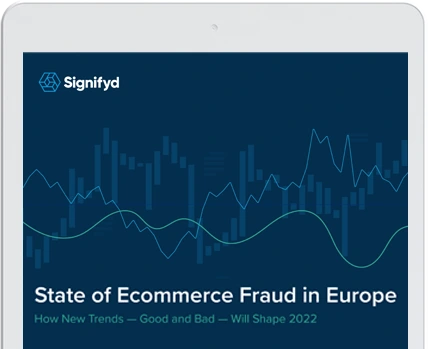There’s a sea change in the payments industry today. Payment service providers (PSPs) are not only competing with other PSPs but with fintechs and other start-ups seizing on the opportunities granted by open banking. Plus there’s regulatory change afoot with PSD2 strong customer authentication regulation and the Strong Customer Authentication (payment SCA) requirements now rolled out across the UK and Europe.
As a PSP, you’ll be looking for every advantage in attracting merchants to your platform and keeping them: Using (and offering) best-in-class fraud tools are sure-fire ways to improve your service.
What merchants really want
When evaluating PSPs merchants care about plenty, including conversions and their return on investment. But they tend to pay especially close attention to pricing and acceptance rate. Both will impact a merchant’s bottom line in a big way.
The logic of this will be obvious to those familiar with PSPs but let me quickly explain for the benefit of those who aren’t: Let’s say you have a merchant with $10 million in sales per year. If you can improve the merchant’s conversion by 1% then you will improve their revenue by $100,000 per year. Signifyd offers PSPs a general uplift of 3% to 5%, so in practice an even bigger chunk of revenue can be returned to the merchant. That’s a significant boost to a merchant’s revenues.
Pricing strategy is outside of the scope of this article – although improving conversion and providing best-in-class tools will certainly help you here too – so let’s assume you’re satisfied that the pricing of your solution is competitive. In this case, the acceptance rate you can offer merchants becomes the key differentiator for choosing a PSP.
Using a fraud tool to supercharge conversion rates
I’ve already mentioned that using Signifyd generally provides a 3% to 5% uplift in conversion attributable to the PSP for merchants. That’s a big improvement and you might be wondering how PSPs achieve that by leveraging a fraud solution.
There are three main ways fraud tools help:
- False positives. More revenue is lost to fear of fraud than fraud itself. Liability for chargeback fraud means retailers can turn away as much as 10% of orders – many of which have been falsely identified as fraudulent. Instead of an inflexible rule-based system for flagging transactions as fraudulent, an AI-powered fraud tool such as Signifyd can intelligently assess legitimate transactions based on a dataset of transactional behavior from thousands of merchants around the world. This results in fewer false positives — i.e. transactions which are flagged as fraudulent which aren’t. And fewer false positives equals higher conversion rates.
- Exemptions. The introduction of Strong Customer Authentication (SCA) in the UK and Europe has created an extra incentive for PSPs to keep fraud rates low: doing so will allow them to request more exemptions from two-factor authentication (2FA) and the SCA requirements. PSPs with fraud rates below 0.13% can exempt transactions below €100; under 0.06% allows for exemptions below €250, and under 0.01% allows for exemptions below €500. Merchants will like this as it will create higher acceptance rates plus it will reduce friction at checkout for a merchant’s customers.
- Bank checks. Banks have their own algorithms to flag fraud which can trap PSPs and merchants in a virtuous or unvirtuous circle: the higher your fraud rate, the more nervous the bank’s algorithm will be and the more likely it will decline transactions – and vice versa for low fraud rates. With a good fraud tool, you can keep the rate of false positives and false negatives low – which will encourage the bank to improve your acceptance rate too.
Fraud tools don’t just help you get customers – they help you keep them too
High acceptance rates are important in improving your retention rates and they provide a direct and tangible improvement to your customers’ bottom lines. Even using the example above, with a 1% improvement in acceptance rate, an effective intelligent fraud tool will easily pay for itself — and then some — in the additional conversion of revenue.
But there are still even more benefits to you and your merchants from using an intelligent fraud too: It also gives you a suite of additional value-added services you can provide to merchants, which will not only expand your offering, it will also enhance the stickiness factor of your brand – particularly important for retaining existing business in your backbook. The greater the number of brilliant tools you can offer a merchant to improve their business, the less likely they are to leave you for a competitor with similar or even favorable pricing.
There are also a number of unique products which only best-in-market fraud tools such as Signifyd can offer and these are benefits you can pass on to merchants. For example, using Signifyd, you can give your merchants:
- Guaranteed Fraud Protection. A financial guarantee against fraudulent chargebacks on all transactions approved by Signifyd so merchants and PSPs can optimize for revenue attainment and never pay a dollar in fraud losses on approved orders..
- Automated Recommendations. Because Signifyd can make decisions on transactions in real-time, your merchant-customers can automate fulfillment — speeding orders to legitimate customers while proactively blocking fraudsters.
Fraud tools: a win-win for merchants and PSPs
As SCA continues to be rolled out and PSPs fully get to grips with its implications, improving conversion rates and creating seamless and simple payment flows for merchants will be a priority for PSPs. A fraud tool such as Signifyd provides a great way to help merchants navigate through the choppy waters while improving your offering as a PSP.
Are you a PSP looking for a competitive edge? Let’s talk.








